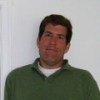In the twelve years I've been at Union, there are only two times I've tried to go to an evening speaker and been turned away. Once was 4-5 years ago, when Maya Angelou spoke on campus, the second time was last night, when Bill Nye the Science Guy spoke. I managed to make it to the foot of the steps of Memorial Chapel before they hit the fire code (939, I think they said the number was) and turned everybody away. There were probably 20-30 students behind me in the line, so even if I had made it all the way to the front, I might've stepped aside and let one of them in instead.
It's worth remembering that, as frustrating as the science communication business gets sometimes, when you can feel like you're shouting into the void, there really is an audience out there for it. Over 1000 people were willing to stand in line on a cold March evening in hopes of seeing a guy in a bow tie talk about science for an hour. While I'm sorry I didn't get in-- the people I've heard from who were there say it was terrific-- the mere fact that he drew that kind of a crowd makes me really happy.
("Featured Image" photo by Matt Milless, grabbed off Facebook.)
